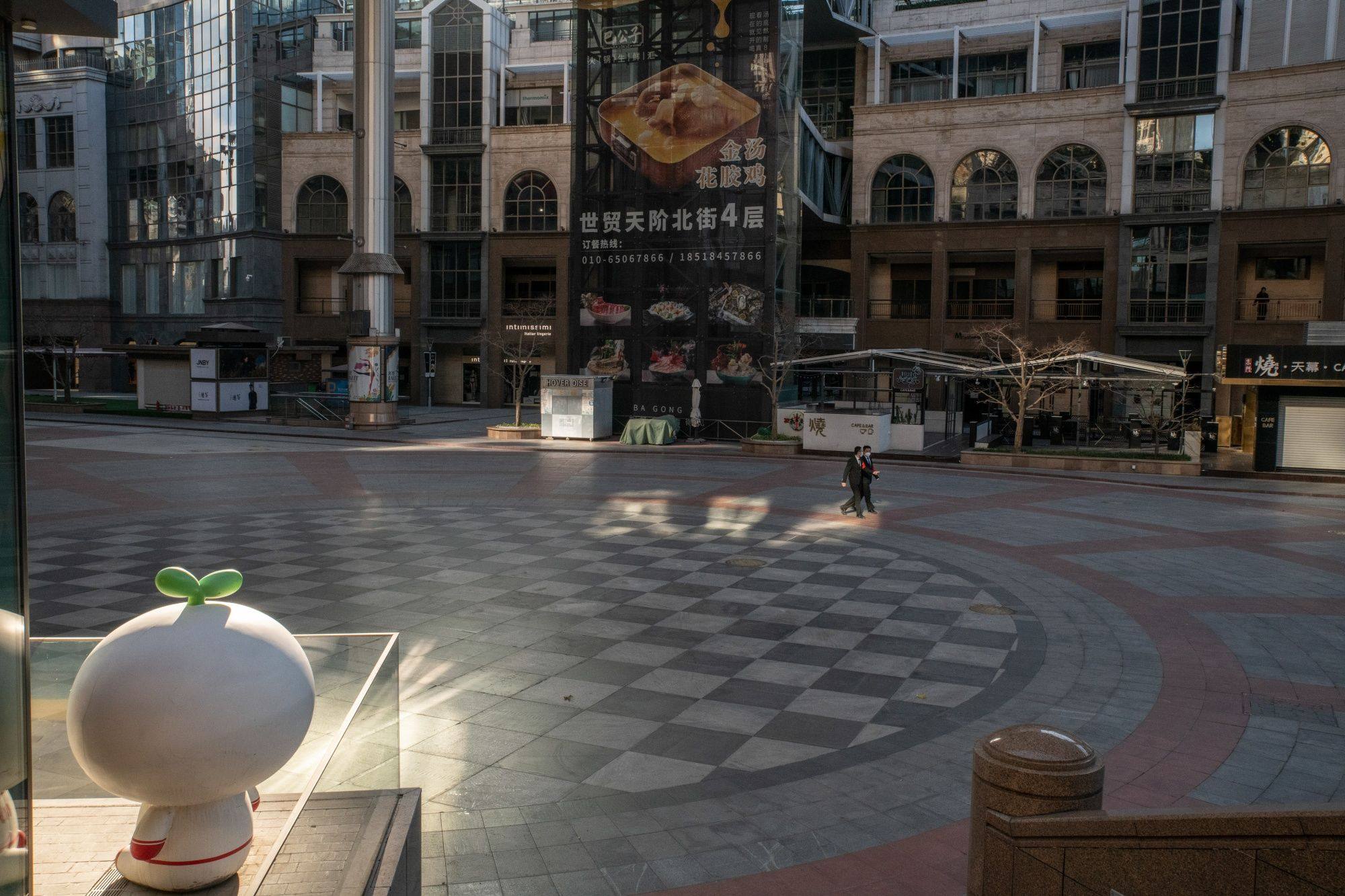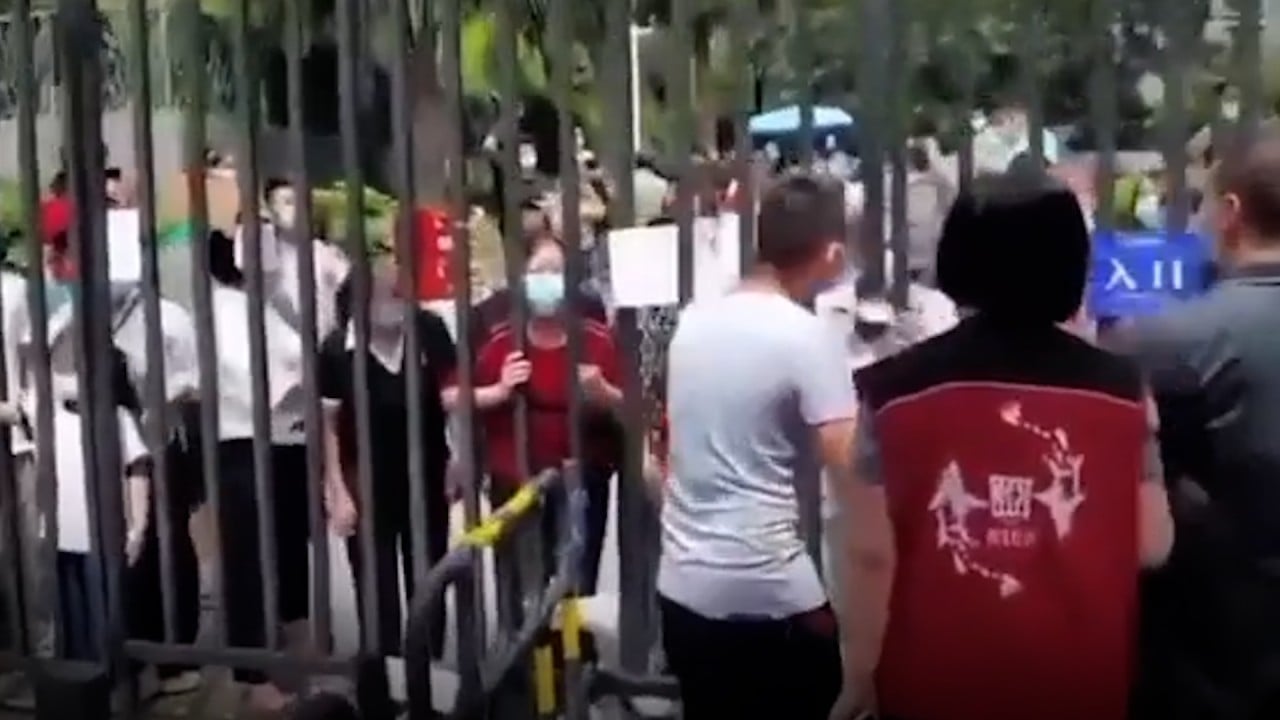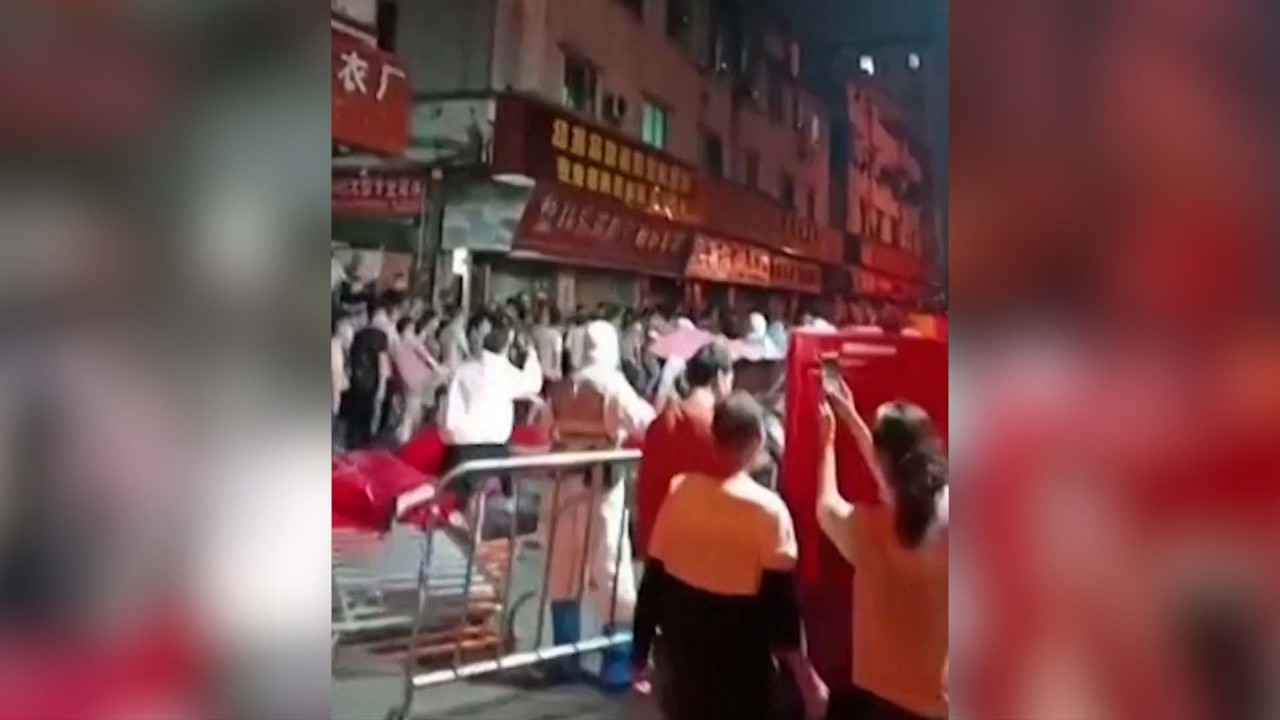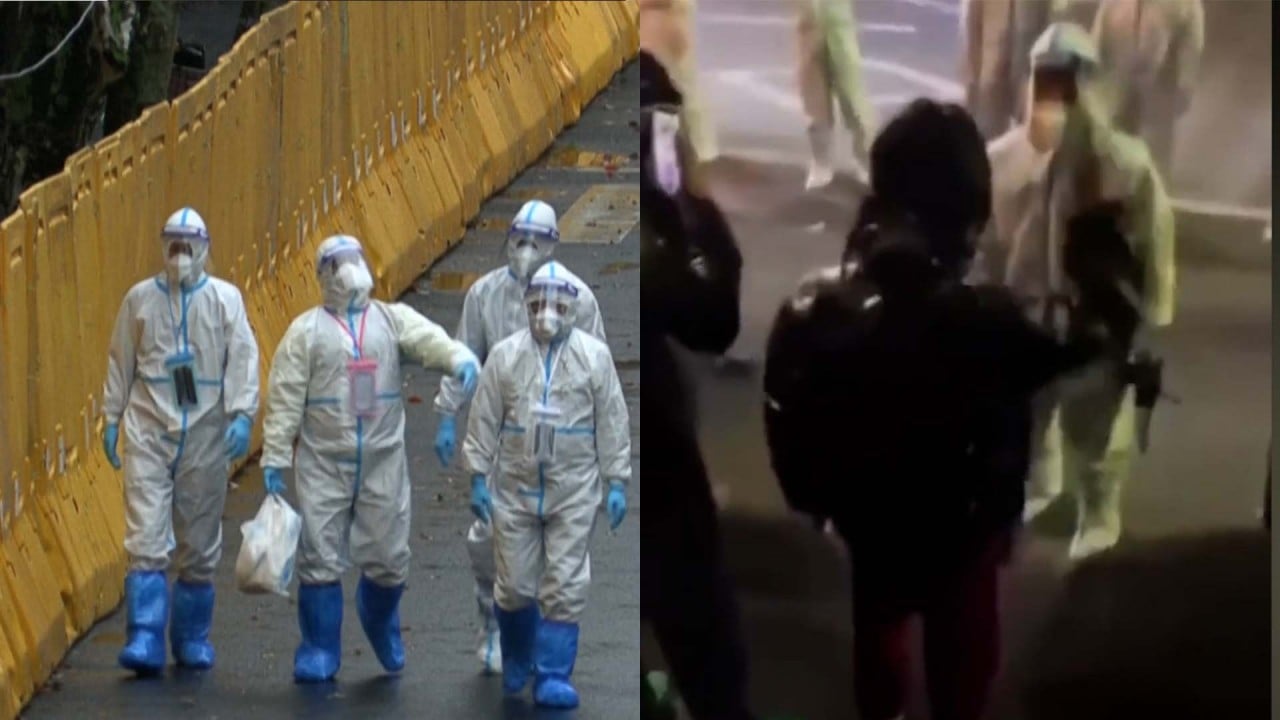
More zero-Covid protests in China after deadly lockdown fire in Xinjiang
- Public defiance of strict pandemic policy fanned by anger over deaths of 10 people in Urumqi, in China’s western Xinjiang region
- Many blame obstacles caused by zero-Covid measures for the tragedy, but officials have denied the allegations
Many protests could not be immediately confirmed, but in Shanghai, police used pepper spray to stop around 300 demonstrators who had gathered at Middle Urumqi Road at midnight.
The crowd brought flowers, candles and signs reading “Urumqi, November 24, those who died rest in peace” – to memorialise the 10 deaths caused by a fire in a block of flats in Xinjiang’s capital city Urumqi.
A protester who gave only his family name, Zhao, said one of his friends was beaten by police and two others were pepper sprayed. He said police stamped on his feet as he tried to stop them from taking his friend away. He lost his shoes in the process, and left the protest barefoot.
China’s zero-Covid policy is under fire, but experts not expecting big changes
Zhao said the protesters shouted slogans including “[President] Xi Jinping, step down, Communist Party, step down”, “unlock Xinjiang, unlock China”, “do not want PCR [tests], want freedom” and “press freedom”.
Around 100 police stood in lines, preventing some protesters from gathering or leaving, and buses carrying more police arrived later, Zhao said.
Another protester, who also gave only his family name of Xu, said there was a larger crowd of thousands of demonstrators, but police stood on the road and let them pass on the pavement.
Posts about the protest were deleted immediately on China’s social media, as China’s ruling Communist Party commonly does to suppress criticism.

Earlier on Saturday, authorities in Xinjiang opened up some neighbourhoods in Urumqi after residents held extraordinary late-night demonstrations against the city’s draconian “zero-Covid” lockdown that had lasted more than three months.
Many alleged that obstacles caused by antivirus measures made the fire worse and took emergency workers three hours to extinguish the blaze.
But officials denied the allegations, saying there were no barricades in the building and that residents were permitted to leave.
Some residents elsewhere in the city have had their doors chained shut, including one who spoke to Associated Press but declined to be named for fear of retribution.
Many in Urumqi believe such brute-force tactics may have prevented residents from escaping in Thursday’s fire and that the official death toll was an undercount.
Anger boiled over after Urumqi officials held a press conference about the fire in which they appeared to shift responsibility for the deaths onto the block’s residents.
“Some residents’ ability to rescue themselves was too weak,” said Li Wensheng, head of Urumqi’s fire department.
Police clamped down on dissenting voices, announcing the arrest of a 24-year-old woman for spreading “untrue information” about the death toll online.
Is China underestimating its Covid-19 numbers in its latest outbreak?
Later on Friday, people in Urumqi marched largely peacefully – in big puffy winter jackets as night temperatures plunged to below freezing.
Videos of protests featuring people holding the Chinese flag and shouting “Open up, open up” spread rapidly on Chinese social media despite heavy censorship.
In some clips, demonstrators were seen shouting and pushing against rows of people in the white, whole-body hazmat suits that local government workers and pandemic-prevention volunteers wear.
But by Saturday, most videos had been deleted by censors. Associated Press could not independently verify all the videos, but two Urumqi residents who declined to be named said large-scale protests took place on Friday night. One of them said he had friends who participated.

AP pinpointed the locations of two of the protest videos in different parts of Urumqi. In one, police in face masks and hospital gowns faced off against shouting protesters. In another, one protester is speaking to a crowd about their demands. It is unclear how widespread the protests were.
The demonstrations, as well as public anger online, are the latest signs of building frustration with China’s intense approach to controlling Covid-19. It is the only major country in the world that still is fighting the pandemic through mass testing and lockdowns.
Given China’s vast security apparatus, protests are risky anywhere in the country, but they are extraordinary in Xinjiang, which for years has been the target of a brutal security crackdown.
Beijing describes the camps as vocational training centres, part of its efforts to counter extremism and terrorism, while helping to lift the residents out of poverty.
Most of the protesters visible in the videos were Han Chinese. A Uygur woman living in Urumqi said it was because Uygurs were too scared to take to the streets despite their rage.
“Han Chinese people know they will not be punished if they speak against the lockdown,” she said, declining to be named for fear of retaliation against her family.
“Uygurs are different. If we dare say such things, we will be taken to prison or to the camps.”
UN report finds it ‘reasonable to conclude’ forced labour exists in Xinjiang
In one video, which the AP could not independently verify, Urumqi’s top official, Yang Fasen, told angry protesters he would open up low-risk areas of the city the following morning.
That promise was realised the next day, as Urumqi authorities announced that residents of low-risk areas would be allowed to move freely within their neighbourhoods. Still, many other neighbourhoods remain under lockdown.
Social media users greeted the news with disbelief and sarcasm. “Only China can achieve this speed,” wrote one user on Weibo, a Twitter-like platform.
On Chinese social media, where trending topics are manipulated by censors, the “zero-Covid” announcement was the No 1 trending hashtag on both Weibo and Douyin, the Chinese edition of TikTok.
Maskless World Cup scenes spark anger in zero-Covid China
The Urumqi fire and protests became a lightning rod for public anger, as millions shared posts questioning China’s pandemic controls or mocking the country’s stiff propaganda and harsh censorship controls.
The explosion of criticism marks a sharp turn in public opinion. Early on in the pandemic, China’s approach to controlling Covid-19 was hailed by its own citizens as minimising deaths at a time when other countries were suffering devastating waves of infections.
China’s leader Xi Jinping had held up the approach as an example of the superiority of the Chinese system in comparison to the West and especially the US, which had politicised the use of face masks and had difficulties enacting widespread lockdowns.

But support for “zero-Covid” has cratered in recent months, as tragedies sparked public anger.
Last week, the Zhengzhou city government in the central province of Henan apologised for the death of a four-month-old baby. She died after a delay in receiving medical attention while suffering vomiting and diarrhoea in quarantine at a hotel in Zhengzhou.
However, the government has doubled down its pandemic policy even as it loosens some measures, such as shortening quarantine times. The central government has repeatedly said it will stick to “zero-Covid”.
Many in Xinjiang have been locked down since August. Most have not been allowed to leave their homes, and some have reported dire conditions, including disrupted food deliveries that have caused residents to go hungry.
Xinjiang reported about 1,000 new cases on Sunday, 114 of them in Urumqi.
The Uygur woman in Urumqi said she had been trapped in her flat since August 8, and was not even allowed to open her window. On Friday, residents in her neighbourhood defied the order, opening their windows and shouting in protest. She joined in.
“No more lockdowns! No more lockdowns!” they screamed.




